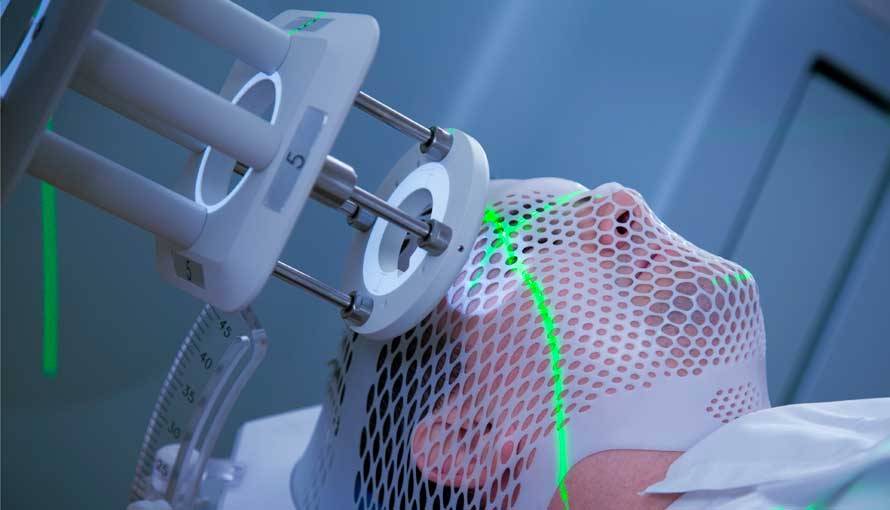What is Radiation Therapy?
More than half of cancer patients are treated with radiation at some time during their course of treatment.
Radiation treatment is the utilization of high-energy radiation to treat cancer. A radiation oncologist might utilize radiation to cure cancer or to ease a cancer patient's pain or alleviate other symptoms due to the cancer.
Radiation treatment works on the grounds that the radiation obliterates the cancer cells' capacity to repeat, and the body normally disposes of these cells. Radiation effects cancer cells by harming their DNA, so the cancer cells can never again isolate and develop. Radiation is best at killing cells that are effectively separating. cancer cells are more powerless against radiation for two reasons:
1. They partition more quickly than normal cells
2. They do not repair this damage as effectively as normal cells
How is radiation therapy used in cancer care?
A radiation oncologist might utilize outer shaft radiation treatment or brachytherapy to treat cancer . Outside beam radiation therapy can be created by a linear accelerator. Proton therapy is one more type of outside shaft radiation therapy that utilizes cyclotrons or synchrotrons to deliver charged molecules that destroy tumors.
Radiation therapy given by radioactive sources that are put inside the patient is called brachytherapy. The radioactive sources are fixed in needles, seeds, wires, or catheters, and embedded straightforwardly into or close to a cancer on a transitory or long-lasting premise. Brachytherapy is a typical therapy for cancer of the prostate, uterus, cervix or breast.
Some cancer patients might be treated with radiation as their essential treatment. Now and again, radiation therapy is given simultaneously as chemotherapy. Chemotherapy utilized with radiation therapy can work on the nearby reaction and diminish metastatic disease.
In different cases, radiation therapy is given previously (neoadjuvant therapy) or later (adjuvant therapy) medical procedure.
Radiation Therapy Process
After radiation therapy has been requested, an arranging stage happens. The patient will initially go through a recreation examine on an exceptional CT scanner. IV or oral differentiation might be utilized. In the event that a gadget is expected to keep the patient still (like a cover) this is made at the simulation scan appointment.
The radiation oncologist then, at that point, frames the region to be dealt with, the cancer, and the areas to be avoided (like ordinary organs). The radiation plan is created and checked by dosimetrists, clinical physicists and radiation oncologists. The radiation plan then goes through quality and wellbeing checks.
Radiation therapy is followed through on the treatment units by radiation advisors. The radiation oncologist alongside other medical care members, including nurses and dietitians, will see the patient during radiation treatment to oversee incidental effects.
Radiation Therapy Techniques
Radiation can damage normal cells. The radiation actually must be designated to the cancer.
A high level type of three-layered (three dimensional) conformal radiation, called force regulated radiation treatment, or IMRT, all the more definitively adjusts the portion to the cancers, permitting more secure conveyance of higher dosages of radiation.
Different methods that empower super exact portions of radiation to growths incorporate stereotactic radiosurgery, which uses 3-D imaging to determine the exact coordinates of a tumor. The profoundly engaged gamma rays or x-rays then, at that point, join on the growth to treat it. The Gamma Knife is a therapy choice that utilizes radioactive cobalt sources to zero in different light emissions on a little region. Straight gas pedals can likewise be utilized to convey stereotactic radiation treatment to the mind. Different pieces of the body can be treated with stereotactic body radiation treatment (SBRT). Arising regions for utilizing SBRT incorporate lung, liver and bone.
Image-guided radiation therapy (IGRT) is much of the time utilized related to IMRT to guarantee the radiation is conveyed to the arranged region. IGRT includes playing out a CT check at the hour of radiation therapy to guarantee the objective is adjusted in the right area. IGRT can consider changes during treatment in region of the body that are inclined to development, like the lungs, and growths found near basic organs and tissues.
Radiation can likewise be utilized to remove blood stream to a growth in vascular organs like the liver. For example, radioembolization utilizes microspheres loaded up with radioactive isotopes to impede a growth's blood supply and starve it.

